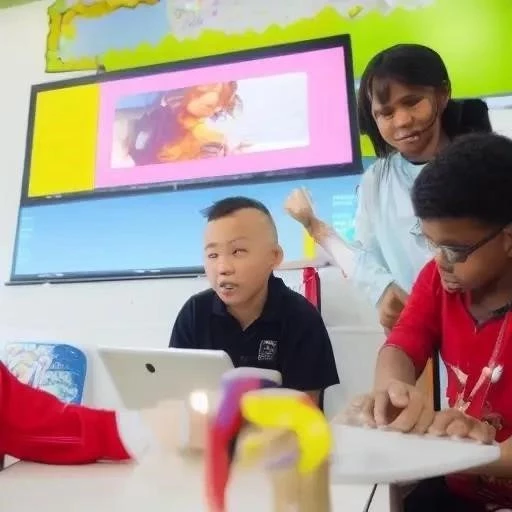The intersection of technology and pedagogy represents a seismic shift in how we approach both teaching and learning. No longer are these two concepts separate entities; instead, they are intertwined threads woven into the fabric of modern education. The evolution of digital tools, from interactive whiteboards to sophisticated learning management systems, offers unprecedented opportunities to personalize instruction, engage students in novel ways, and foster deeper understanding. This necessitates a reevaluation of traditional pedagogical approaches and a willingness to embrace innovative strategies that leverage the power of technology and pedagogy to create more effective and engaging learning experiences.
The Evolving Role of Technology in Education
Technology’s impact on education is multifaceted and profound. It’s not simply about replacing textbooks with tablets; it’s about reimagining the entire learning process. Consider these key aspects:
- Accessibility: Technology breaks down geographical barriers, providing access to educational resources for students in remote areas or with disabilities.
- Personalization: Adaptive learning platforms can tailor instruction to meet the individual needs and learning styles of each student.
- Engagement: Interactive simulations, gamified learning experiences, and multimedia content can captivate students’ attention and foster deeper engagement.
Challenges and Opportunities
While the potential benefits of integrating technology into pedagogy are undeniable, several challenges must be addressed:
Digital Divide
Unequal access to technology and internet connectivity creates a digital divide, potentially exacerbating existing educational inequalities. Ensuring equitable access for all students is crucial.
Teacher Training
Effective integration of technology requires teachers to develop new skills and competencies. Professional development programs must equip educators with the knowledge and skills necessary to leverage technology effectively.
Curriculum Design
Curriculum design must evolve to reflect the changing landscape of education. Instead of simply digitizing traditional content, educators must create learning experiences that leverage the unique capabilities of technology.
The Future of Teaching and Learning
The future of education lies in the thoughtful and strategic integration of technology and pedagogy. It’s about creating learning environments that are engaging, personalized, and accessible to all. As technology continues to evolve, educators must remain adaptable and embrace new tools and strategies to meet the ever-changing needs of their students. The thoughtful implementation of technology will continue to shape the future of learning, and ultimately, that future will be brighter and more equitable for all.
Rethinking Assessment in the Digital Age
Traditional assessment methods, such as standardized tests and rote memorization exercises, often fail to capture the full range of skills and knowledge that students acquire in a technology-rich learning environment. There is a growing need to explore alternative assessment strategies that are more authentic, formative, and aligned with the demands of the 21st century. Consider the following:
- Project-Based Learning: Students engage in real-world projects that require them to apply their knowledge and skills in meaningful ways. Assessment focuses on the process as well as the product.
- Portfolio Assessment: Students compile a collection of their work over time, showcasing their growth and development. This provides a more holistic view of their learning.
- Digital Badges: Digital badges can be awarded to recognize specific skills and competencies, providing a more granular and portable record of achievement.
The Importance of Critical Thinking and Digital Literacy
In an age of information overload, critical thinking and digital literacy are essential skills for students. They must be able to evaluate the credibility of sources, identify bias, and synthesize information from multiple perspectives. Educators play a vital role in fostering these skills by:
Promoting Inquiry-Based Learning
Encourage students to ask questions, explore different perspectives, and draw their own conclusions. This fosters a spirit of intellectual curiosity and critical thinking.
Teaching Media Literacy
Help students understand the different types of media, how they are created, and how they can be used to influence opinions. This empowers them to become more informed and discerning consumers of information.
Integrating Technology Ethically
Teach students about the ethical implications of technology, including issues such as privacy, copyright, and cyberbullying. This prepares them to be responsible digital citizens.
Cultivating Collaboration and Communication Skills
Technology enables new forms of collaboration and communication, both within and beyond the classroom. Students can work together on projects, share ideas, and learn from each other in ways that were not possible before. To foster these skills, educators should:
- Use collaborative online tools: Platforms like Google Docs, Microsoft Teams, and online discussion forums can facilitate communication and collaboration among students.
- Design group projects: Assign projects that require students to work together to solve problems or create products.
- Encourage peer feedback: Provide opportunities for students to give and receive feedback on each other’s work.
Ultimately, the successful integration of technology and pedagogy hinges on a commitment to continuous learning and adaptation. As educators, we must embrace the opportunities that technology offers while remaining mindful of the challenges. The aim is to create learning experiences that are not only engaging and effective but also prepare students to thrive in a rapidly changing world. By prioritizing critical thinking, digital literacy, and collaborative skills, we can empower them to become lifelong learners and active participants in a global society.


